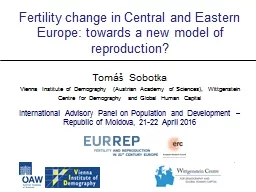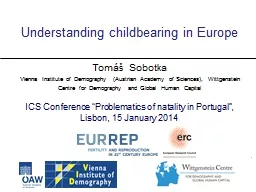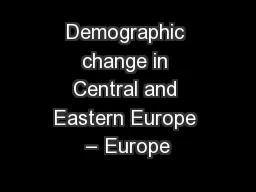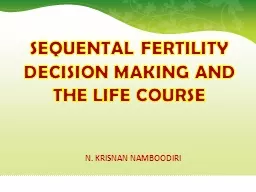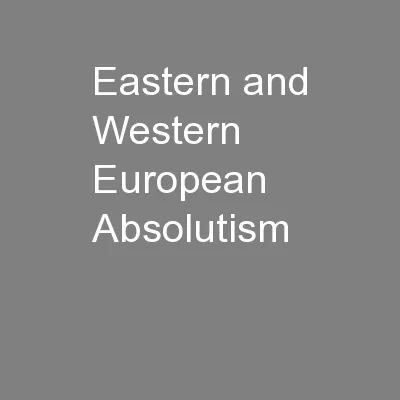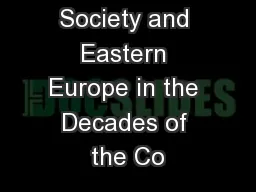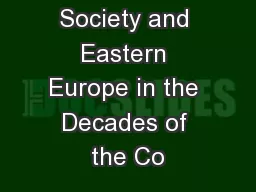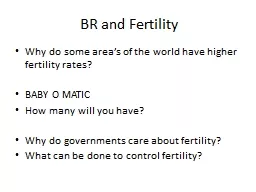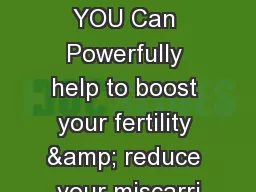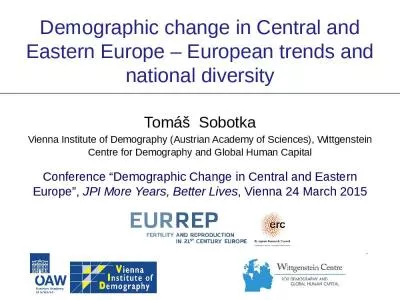PPT-Fertility change in Central and Eastern Europe: towards a new model of reproduction?
Author : jane-oiler | Published Date : 2018-02-20
International Advisory Panel on Population and Development Republic of Moldova 2122 April 2016 Tom áš Sobotka Vienna Institute of Demography Austrian Academy
Presentation Embed Code
Download Presentation
Download Presentation The PPT/PDF document "Fertility change in Central and Eastern ..." is the property of its rightful owner. Permission is granted to download and print the materials on this website for personal, non-commercial use only, and to display it on your personal computer provided you do not modify the materials and that you retain all copyright notices contained in the materials. By downloading content from our website, you accept the terms of this agreement.
Fertility change in Central and Eastern Europe: towards a new model of reproduction?: Transcript
Download Rules Of Document
"Fertility change in Central and Eastern Europe: towards a new model of reproduction?"The content belongs to its owner. You may download and print it for personal use, without modification, and keep all copyright notices. By downloading, you agree to these terms.
Related Documents

